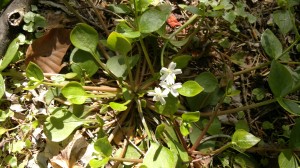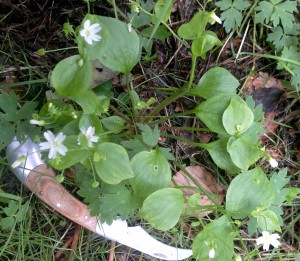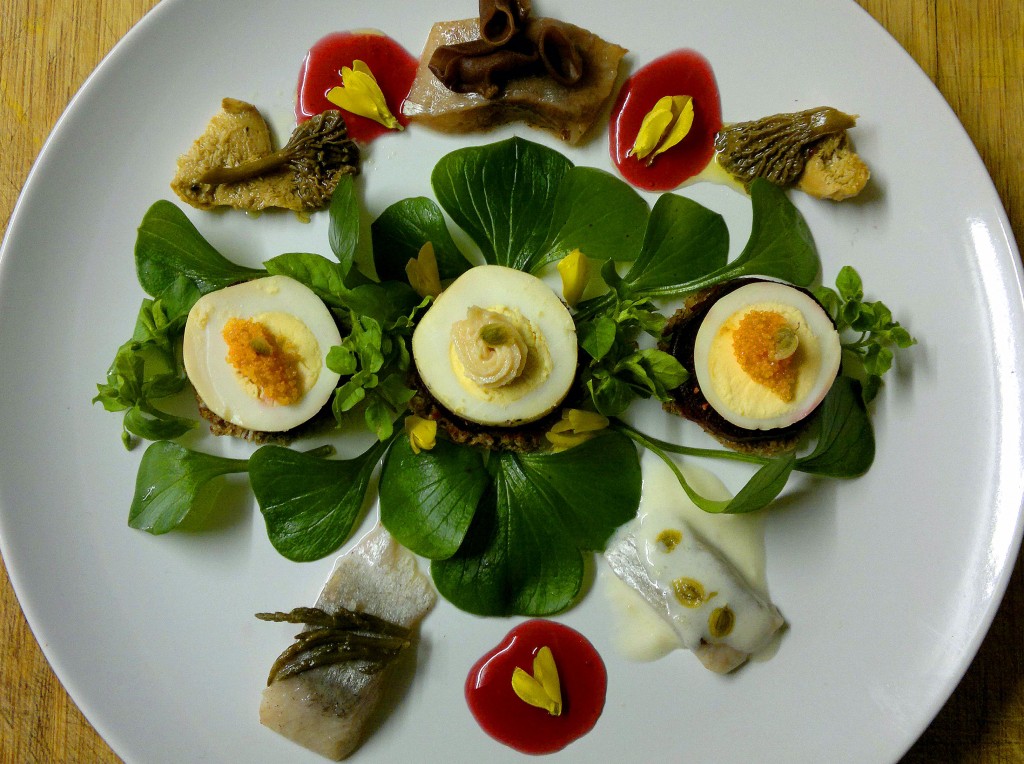Pink Purslane – Identification, Distribution, Edibility
Claytonia Sibirica
- Edibility – 4/5 – A delicious, mild, succulent green leaf with an earthy beetroot flavour. Leaves, stems and flowers.
- Identification – 3/5 – The short (up to 20cm), glossy, veined, rounded, single-stalked leaves are quite distinctive, often forming extensive mats made of many rosettes. Between April and July the 5 pale pink to white split petalled flowers will help confirm identification, nodding above flower stalks with oppositely paired leaves. The most likely confusion for beginners is with red campion basal leaves when neither plant is in flower. Red campion leaves lack the distinctly rounded lobes and is inedible. It tastes awful, so you will soon know if you have mixed them up!
- Distribution – 3/5 – Quite common in damp shady wood edges, riverbanks and hedgerows with a preference for acid soils.
- Season – Perrenial – All-year-round, slightly inferior flavour in summer.
This is a delightful, easy-to-come-by plant that can be cooked like spinach, added to stir-fries etc, but is at its best raw. I love to employ its earthy flavour in winter salads with pickled fish, beetroot and elderberry vinegar, though it works well as a mild “bulker” with sharper-tasting leaves in spring. When you find a good patch, harvesting is quick and efficient – simply hold the tops of the rosettes and cut off below. It grows back within a few weeks. It is a mild diuretic and has been used as a poultice for cuts and sores, its juice as a treatment for sore eyes, and even as a cold infusion for discouraging dandruff!



8 Comments
Good information keep up the great work
uh… the picture you showed here is NOT purslane. I have two pink purslane at home. It looks more like a jade plant but with flowers.
Uh…yes it is. Several species use the name purslane, which is why I include the latin name Claytonia Sibirica. Maybe do some research before you charge in?
Haha all this time I thought this was chickweed! Now I know! Thanks.
In the US we call this Spring beauty (Claytonia sibirica or virginica). Claytonia is sweet and delicious with a nice tender texture. We also find Miner’s Lettuce (Claytonia perfoliata) which has round leaves with the stem coming through the middle. Also very sweet lettuce like flavor.
What we call Purslane (Portulaca oleracea) has fleshy succulent leaves which are more long oval shaped, very high in Omega 3.
I’ve just ID’d this with your help, in woods near Crieff, and enjoyed it with a tomato salad. Delicious. Thank you!
New to gardening here. Cool site.
I have pink purslane growing in my yard and garden but have identified it as PORTULACA PILOSA. Can you give us some insight on that, please? https://mrec.ifas.ufl.edu/research/weedsbyflowercolor/pinkorblue/portulacapilosa/
This page refers to Claytonia sibaritica. Several other species have the common name purslane or even pink purslane. This is why I include the binomial name. 🙂
1 Trackback